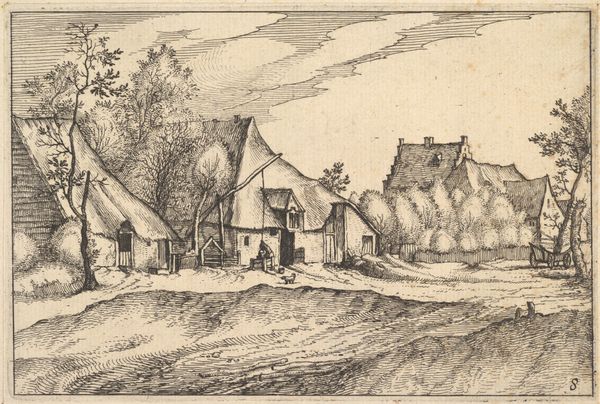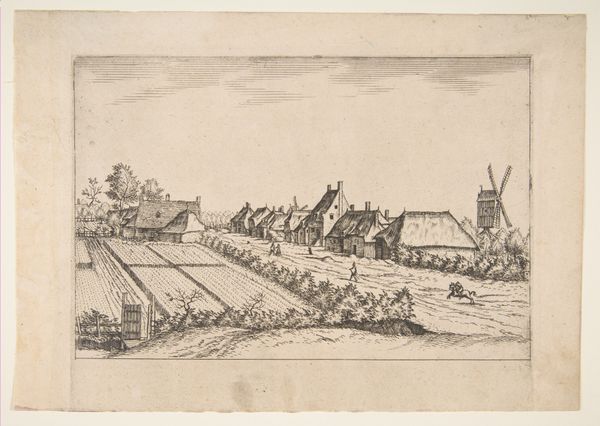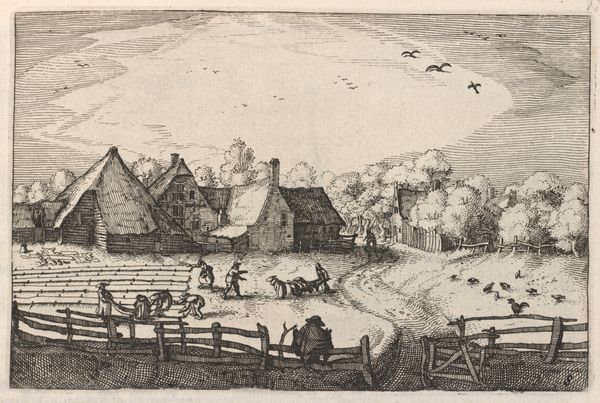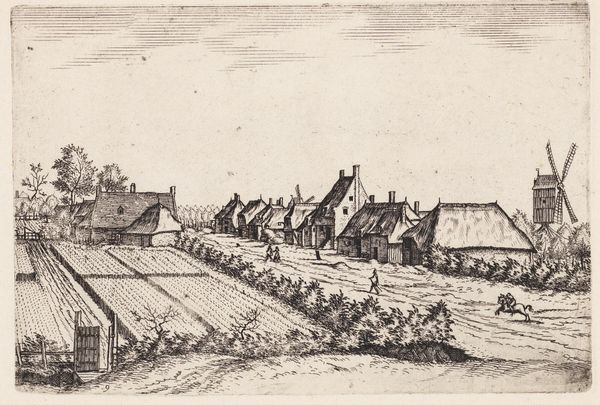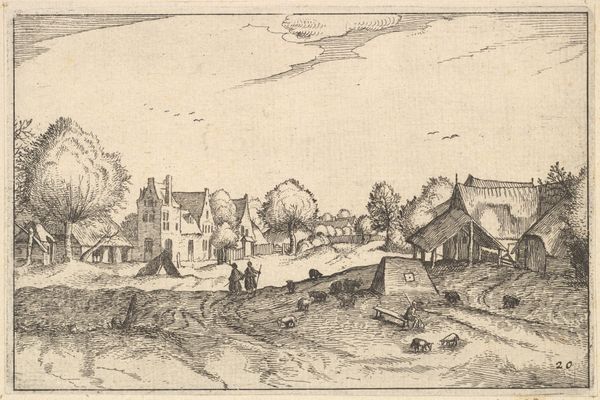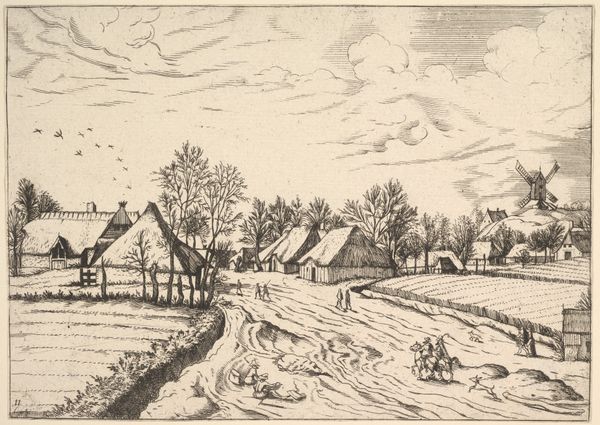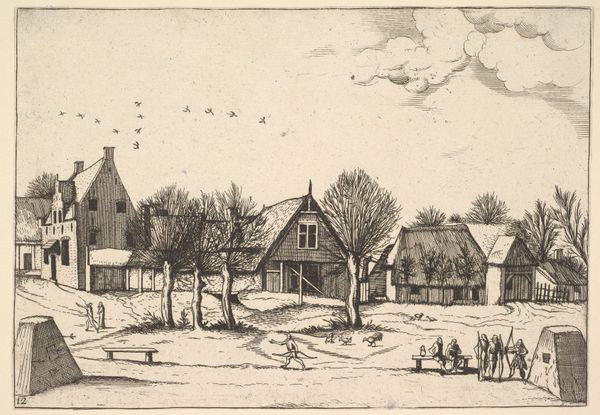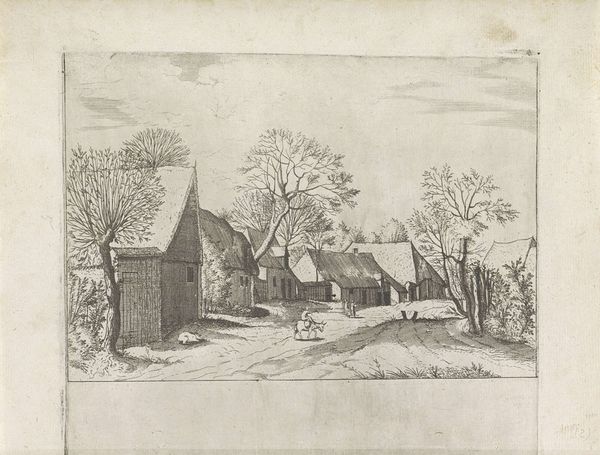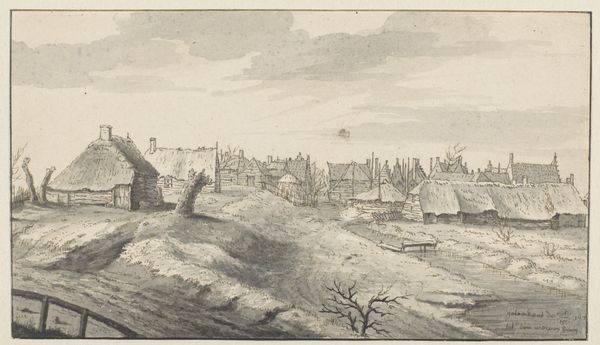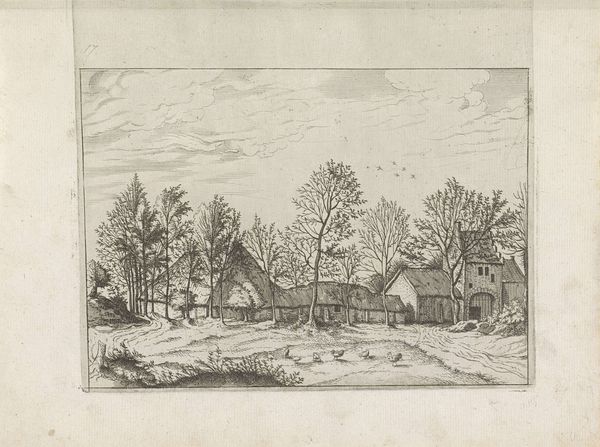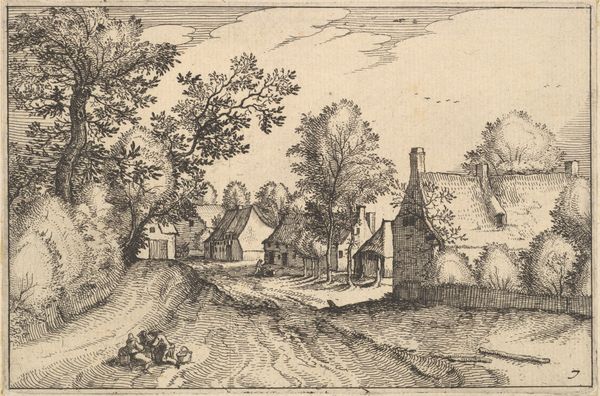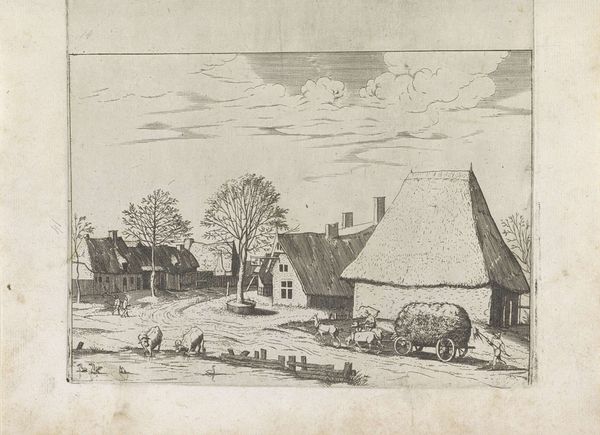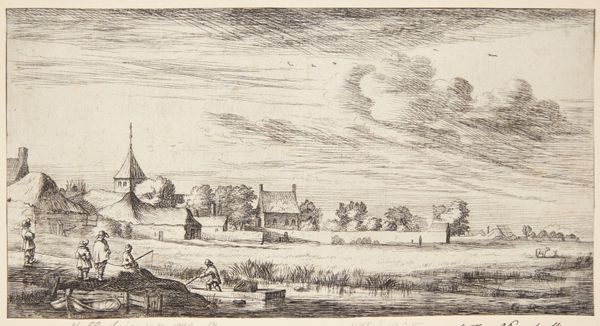
Fields and a Road, plate 8 from "Regiunculae et Villae Aliquot Ducatus Brabantiae" 1605 - 1615
0:00
0:00
drawing, print
#
drawing
#
toned paper
#
light pencil work
#
quirky sketch
# print
#
pencil sketch
#
human-figures
#
sketch book
#
house
#
personal sketchbook
#
road
#
sketchwork
#
pen-ink sketch
#
human
#
sketchbook drawing
#
sketchbook art
Dimensions: Sheet: 4 1/8 × 6 3/16 in. (10.5 × 15.7 cm)
Copyright: Public Domain
Curator: "Fields and a Road," a plate from "Regiunculae et Villae Aliquot Ducatus Brabantiae," was created between 1605 and 1615 by Claes Jansz. Visscher. The work, rendered as a print, offers a detailed look at a rural landscape, doesn’t it? Editor: It does indeed. I'm immediately struck by the sense of tranquility... or is it desolation? The tones are quite muted and the composition feels sparse. It almost feels like a memory, filtered through a heavy layer of nostalgia or something melancholic. Curator: I see it. Given the period, just after the Dutch Revolt and amidst significant social upheaval, the choice of such a seemingly calm subject becomes politically charged, perhaps hinting at the desire for simpler, pre-conflict times. Editor: Right, a pastoral longing! The figures, are they merely anecdotal, or do they symbolize the peasantry and their reliance on agriculture amidst sociopolitical tensions? It makes me think of the early stages of capitalism and the exploitation of rural labor. Curator: Perhaps. Visscher, who made his living primarily as a mapmaker and print publisher, presents the common countryside of Brabant. There's something quietly rebellious about celebrating these understated settings during the grand Baroque era, wouldn't you agree? Editor: Yes, like a deliberate choice to centre the lives of those typically on the margins. How might Visscher be highlighting the environmental impacts of conflict too? It’s difficult to tell at this scale, but maybe in its emphasis of simple routines, this landscape underscores an understated activism by simply focusing on daily survival and resilience. Curator: It could very well be. There is an unmistakable appreciation for the land and, therefore, an inherent value being ascribed to its inhabitants. I think Visscher successfully captures both the simplicity and complexity inherent to their existence through these stark images. Editor: So, the art whispers a silent scream about power and visibility, a reminder to acknowledge and act. These historical landscapes, as much as contemporary cityscapes, shape and reveal histories.
Comments
No comments
Be the first to comment and join the conversation on the ultimate creative platform.
